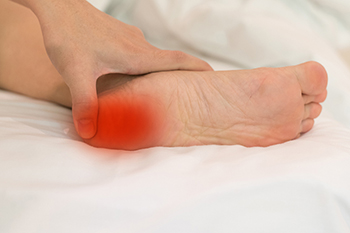
Apophysitis of the calcaneus, also known as Sever’s disease, is a common cause of heel pain in children and teens, especially those who are active in sports. It happens when the growth plate in the heel becomes irritated from too much stress or pressure. This area is still developing in young people, so it is more sensitive to pulling from the Achilles tendon during running and jumping. The pain often feels like a dull ache or sharp discomfort in the back or bottom of the heel, and it may get worse with activity. The heel may feel sore to the touch or stiff in the morning. Rest and gentle stretching can help relieve symptoms. Supportive shoes or heel pads may also reduce pressure on the heel. If your child is limping or complaining of heel pain, it is suggested that you see a chiropodist for a proper diagnosis and appropriate treatment plan.
Sever’s disease typically affects young children and teenagers. If your child complains of foot pain, please consult with one of our chiropodists from West Toronto Foot & Ankle Clinic Inc. . Our chiropodist will assess your condition and provide you with quality foot and ankle treatment.
What Is Sever’s Disease?
Sever’s disease, also known as calcaneal apophysitis, is an inflammation of the growth plate in the heel bone. It is typically caused by overuse due to repetitive activities such as running, jumping, and playing certain sports. This condition most frequently affects children between the ages of 8 and 14.
Symptoms
Symptoms of Sever’s disease include:
- Pain in the back or bottom of the heel
- Pain when the sides of the heel are squeezed
- Limping or walking on tiptoes to avoid putting pressure on the heel
- Difficulty running, jumping, or participating in usual activities
- Fatigue
Diagnosis
Sever’s disease is diagnosed by taking a thorough medical history and performing a physical examination. Imaging studies, such as an X-ray, can help rule out other injuries like a fracture.
Treatment
Sever’s disease typically heals without any long-term complications. Treatment involves resting the affected foot by reducing typical activities, wearing orthotics to support the foot, immobilizing the affected foot, taking medications to reduce pain and inflammation, and stretching the foot.
If you have any questions, please feel free to contact our office located in . We offer the newest diagnostic and treatment technologies for all your foot care needs.
